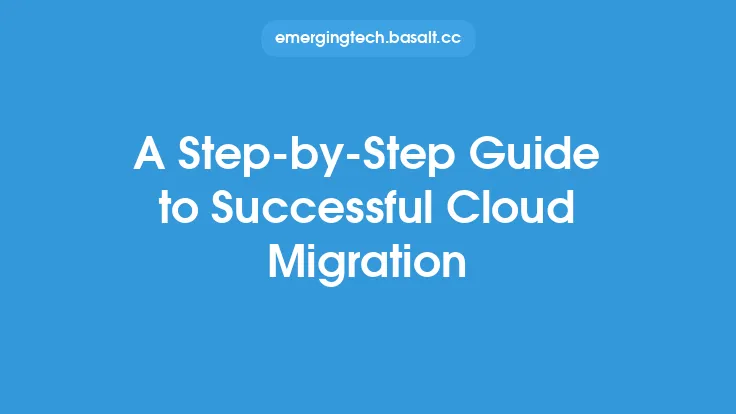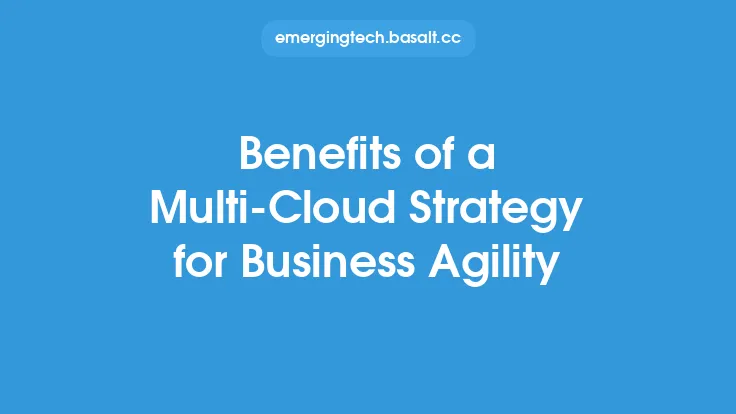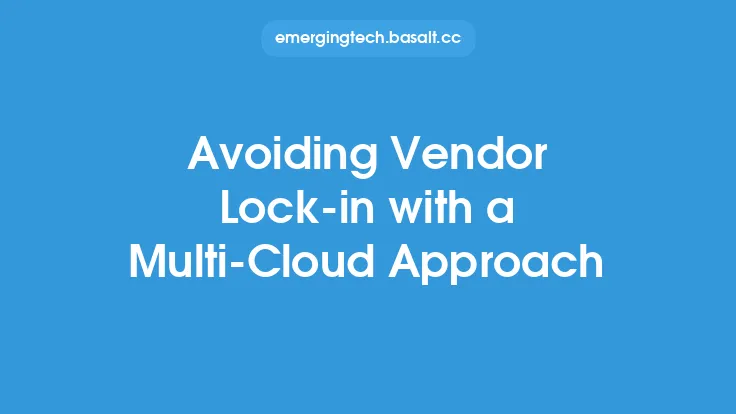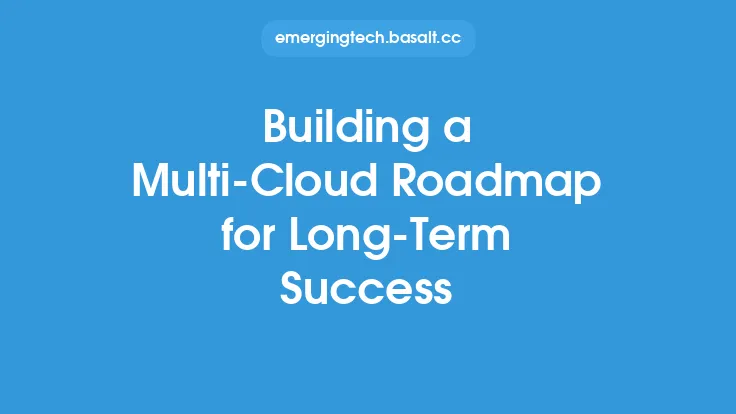Developing a successful multi-cloud strategy is a complex task that requires careful planning, execution, and management. A multi-cloud strategy involves using multiple cloud services from different providers to meet the diverse needs of an organization. This approach can provide greater flexibility, scalability, and reliability, but it also introduces new challenges, such as increased complexity, security risks, and management overhead.
Introduction to Multi-Cloud Strategy
A multi-cloud strategy is not just about using multiple cloud services; it's about creating a cohesive and integrated architecture that leverages the strengths of each cloud provider. To develop a successful multi-cloud strategy, organizations need to understand their business requirements, assess their current infrastructure and applications, and evaluate the capabilities of different cloud providers. This involves analyzing factors such as cost, security, compliance, performance, and support.
Assessing Business Requirements
The first step in developing a multi-cloud strategy is to assess the business requirements of the organization. This involves identifying the key drivers for adopting a multi-cloud approach, such as reducing costs, improving scalability, or enhancing innovation. Organizations should also evaluate their current applications and workloads to determine which ones are suitable for cloud deployment and which cloud providers can best meet their needs. Additionally, they should consider factors such as data sovereignty, regulatory compliance, and security requirements.
Evaluating Cloud Providers
Once the business requirements are understood, the next step is to evaluate the capabilities of different cloud providers. This involves assessing their infrastructure, platform, and software offerings, as well as their security, compliance, and support capabilities. Organizations should also consider factors such as pricing models, service level agreements, and vendor lock-in. Some of the key cloud providers to consider include Amazon Web Services (AWS), Microsoft Azure, Google Cloud Platform (GCP), IBM Cloud, and Oracle Cloud.
Designing a Multi-Cloud Architecture
Designing a multi-cloud architecture involves creating a cohesive and integrated framework that leverages the strengths of each cloud provider. This requires a deep understanding of the organization's applications, data, and workflows, as well as the capabilities of each cloud provider. Organizations should consider factors such as data integration, application portability, and security consistency across multiple cloud environments. They should also evaluate the use of cloud-agnostic tools and platforms, such as containerization and serverless computing, to simplify application deployment and management.
Implementing a Multi-Cloud Strategy
Implementing a multi-cloud strategy involves deploying and managing applications and data across multiple cloud environments. This requires a range of skills and expertise, including cloud architecture, application development, data integration, and security management. Organizations should consider using cloud management platforms (CMPs) to simplify the deployment, management, and monitoring of cloud resources. They should also evaluate the use of automation tools, such as DevOps and continuous integration/continuous deployment (CI/CD), to streamline application development and deployment.
Managing a Multi-Cloud Environment
Managing a multi-cloud environment is a complex task that requires careful planning, execution, and monitoring. Organizations should consider using cloud management platforms (CMPs) to simplify the management of cloud resources, as well as monitoring and analytics tools to track performance, security, and compliance. They should also evaluate the use of artificial intelligence (AI) and machine learning (ML) to optimize cloud resource utilization, predict performance bottlenecks, and detect security threats.
Security and Compliance in a Multi-Cloud Environment
Security and compliance are critical considerations in a multi-cloud environment. Organizations should consider using cloud security gateways (CSGs) to simplify security management, as well as compliance frameworks, such as HIPAA and PCI-DSS, to ensure regulatory compliance. They should also evaluate the use of encryption, access controls, and identity management to protect sensitive data and applications. Additionally, organizations should consider using cloud-based security information and event management (SIEM) systems to monitor and analyze security threats.
Best Practices for a Successful Multi-Cloud Strategy
To develop a successful multi-cloud strategy, organizations should follow a range of best practices, including:
- Define clear business requirements and goals
- Evaluate the capabilities of different cloud providers
- Design a cohesive and integrated multi-cloud architecture
- Implement a cloud-agnostic approach to application development and deployment
- Use cloud management platforms (CMPs) to simplify cloud resource management
- Monitor and analyze performance, security, and compliance
- Evaluate the use of automation tools, such as DevOps and CI/CD, to streamline application development and deployment
- Consider using AI and ML to optimize cloud resource utilization and predict performance bottlenecks.
By following these best practices and considering the technical and business aspects of a multi-cloud strategy, organizations can develop a successful approach that meets their diverse needs and drives business success.





